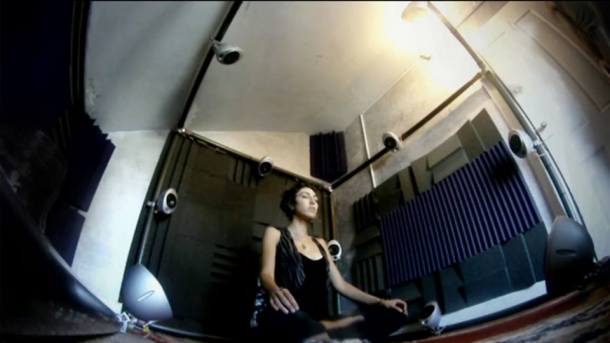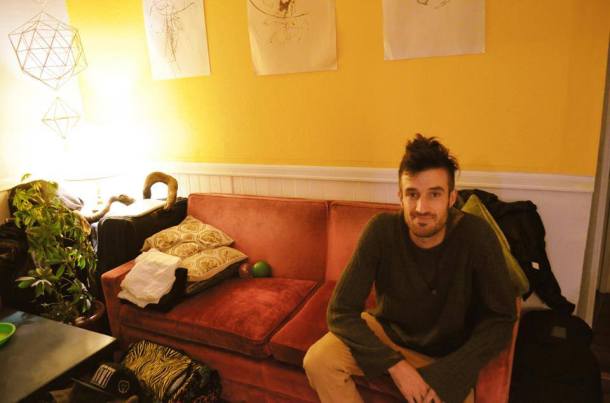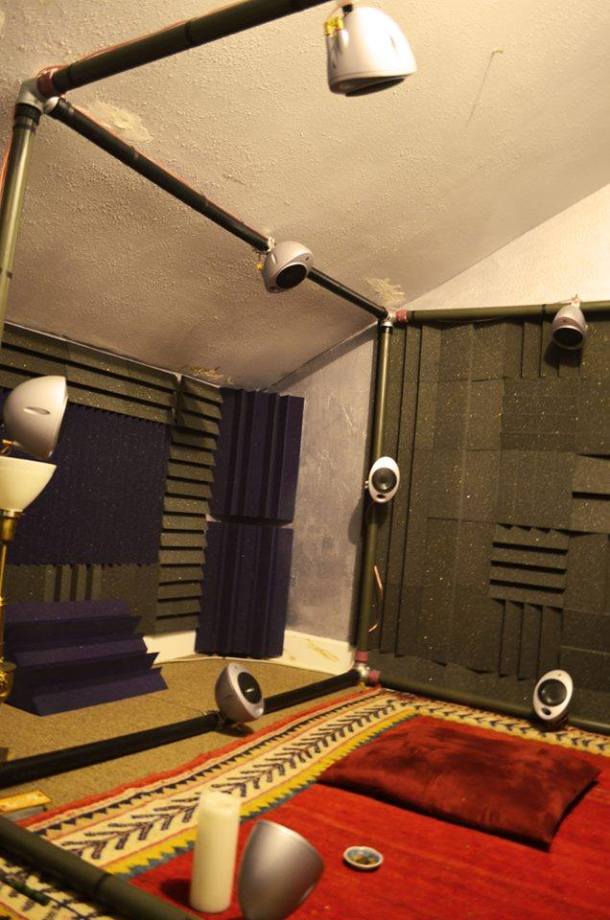 Before I visited Resonance, I had never meditated. It’s not that I don’t see any merit in the practice, nor do I have any cultural or religious opposition to any forms of spirituality. I just hadn’t done it—besides, the thought of facing one’s self in scheduled isolation is daunting, to say the least.
Before I visited Resonance, I had never meditated. It’s not that I don’t see any merit in the practice, nor do I have any cultural or religious opposition to any forms of spirituality. I just hadn’t done it—besides, the thought of facing one’s self in scheduled isolation is daunting, to say the least.
But in a time when music is replacing more traditional institutions for self-identification and catharsis, the concept of sound therapy isn’t exactly foreign: people go to concerts to experience some otherworldliness and bathe in the euphoria of harmonious vibrations.
As a routine concertgoer these last few years, I had been in the mood lately to explore some alternate forms of release. So when I heard about Resonance, an Oakland-based Ambisonic-immersive sound chamber for meditation, stress relief and auditive healing, I eagerly contacted Daniel Lofredo Rota, the man behind the project.
Within a week, I found myself facing a chalky yellow Victorian-style house with turquoise bow windows. Daniel, a tall yet unassuming figure of Ecuadorian, Argentine, and Italian descent, greeted me at the door, and—following a tour of the residence—we settled on the back porch where I inquired about the motivation behind Resonance.
This, however, proved to be an open-ended question, and we sat, watching the night spread over the neighbors’s gable roofs, casting words about music, apoliticism and supernaturalism into the air.
From these tangential trails, a story emerged.
Initially, Daniel had been considering the idea of a “listening room.” Upon hearing of Ambisonics, an experimental field of music technology that uses the spatial arrangement of speakers to simulate how sound actually hits a point in three-dimensional space, he scoured the web for people (most notably, Andrew Kimpel) who could help him learn about and build Resonance. He emphasized that his current set-up is a product of others’ efforts.
 Ambisonics differs from other surround sound systems because of its emphasis on the directionality of sound. This focus involves specialized techniques in three-dimensional recording, digital processing, and acoustic arrangement to capture and reproduce auditory environments. Whereas stereo systems work only on a single plane, Ambisonics distributes signals in the three-dimensional sphere, utilizing angular components and depth. In addition, each speaker gives a “weighted sum of the whole,” creating a virtual sonic environment where sounds can be isolated at specific locations around the listener.
Ambisonics differs from other surround sound systems because of its emphasis on the directionality of sound. This focus involves specialized techniques in three-dimensional recording, digital processing, and acoustic arrangement to capture and reproduce auditory environments. Whereas stereo systems work only on a single plane, Ambisonics distributes signals in the three-dimensional sphere, utilizing angular components and depth. In addition, each speaker gives a “weighted sum of the whole,” creating a virtual sonic environment where sounds can be isolated at specific locations around the listener.
Amidst his research into Ambisonics and his experiences of its bodily effects firsthand, Daniel realized that the “listening room” had medicinal potential. Daniel is no stranger to sound-healing and its methods either, with a long-time interest in Showga (yoga accompanied by live music) and musical composition of Deep Cinematics (“a blend of experimental drones and cinematic bells,” according to their fundraiser.)
With this realization, Resonance became a project directed towards auditory medication and induced meditation. In particular, Daniel mentioned the use of therapeutic noises such as binaural and isochronic beats, which have been shown to stimulate theta rhythm patterns in the brain: patterns present when one is on the periphery of consciousness, often produced by deep meditation or sleep.
Ultimately, Daniel hopes to cater to the particular therapies and musical tastes of individual listeners. However, due to the complex mechanisms behind Ambisonic periphony, this process is still being fine-tuned with feedback he receives following each session and data from EEG scans conducted on voluntary patients as they undergo treatment.
Unable to contain my curiosity, I followed Daniel upstairs to the listening room, where a black, human-sized box frame supported twelve equidistantly arranged speakers, with each speaker inclined towards the center of the edifice. There, a cushion rested atop a Persian rug.
 I plopped down on that cushion, while Daniel imparted some concluding remarks, advising me to concentrate on breathing deeply. He handed me two oil mixtures to anoint my temples and third eye, proceeding to light a strong, purifying incense. Then he turned the light off and left the room. Moonlight and a few dots of computer light remained, illuminating the room with a soft blue.
I plopped down on that cushion, while Daniel imparted some concluding remarks, advising me to concentrate on breathing deeply. He handed me two oil mixtures to anoint my temples and third eye, proceeding to light a strong, purifying incense. Then he turned the light off and left the room. Moonlight and a few dots of computer light remained, illuminating the room with a soft blue.
Instinctively, my eyes closed as the bells started to toll.
From what I remember of the next forty minutes, the first audio track was more of a linear narrative. It began with low guttural chanting and the space was soon pervaded with cymbals, gongs, and other idiophones. These bells spilled over the track, washing over the low intonations until nothing but sparse ringing remained, resonating deep in my body. Eventually, I was left in a sound-cave, lulled by the noises of nature.
The composition that followed marked a departure from this serenity. Drawing influences from drone music, the second piece was definitely more modern: it employed dissonance and electronic abstraction to urge the recipient along some contemplative path.
I don’t want to give too much away, as theatrics do play into the processes of Resonance. Music becomes an enhanced, sensory experience, tangible and spatial in a way that stereo sound can only hint at. At one point, the back of my head felt as if it had been unzipped… in the most pleasant way possible.
If this article hasn’t convinced you yet, I recommend you experience Resonance yourself. A local, home-based project with good intentions and thoughtful personalities, it is certain to resonate (pun intended) with those who have even the slightest interest in meditation, sound therapy, or musical discovery.
For more information about Resonance, visit the Indiegogo webpage. If you’re interested in the general mechanisms of Ambisonic technology, Soun3D has an informative page about what Ambisonics is and how it works.
Article by Jay Kwok


[…] appreciate the musical diversity here. Between the sold-out rap concerts, symphony orchestras, and conceptual listening projects, there is pretty much something for […]